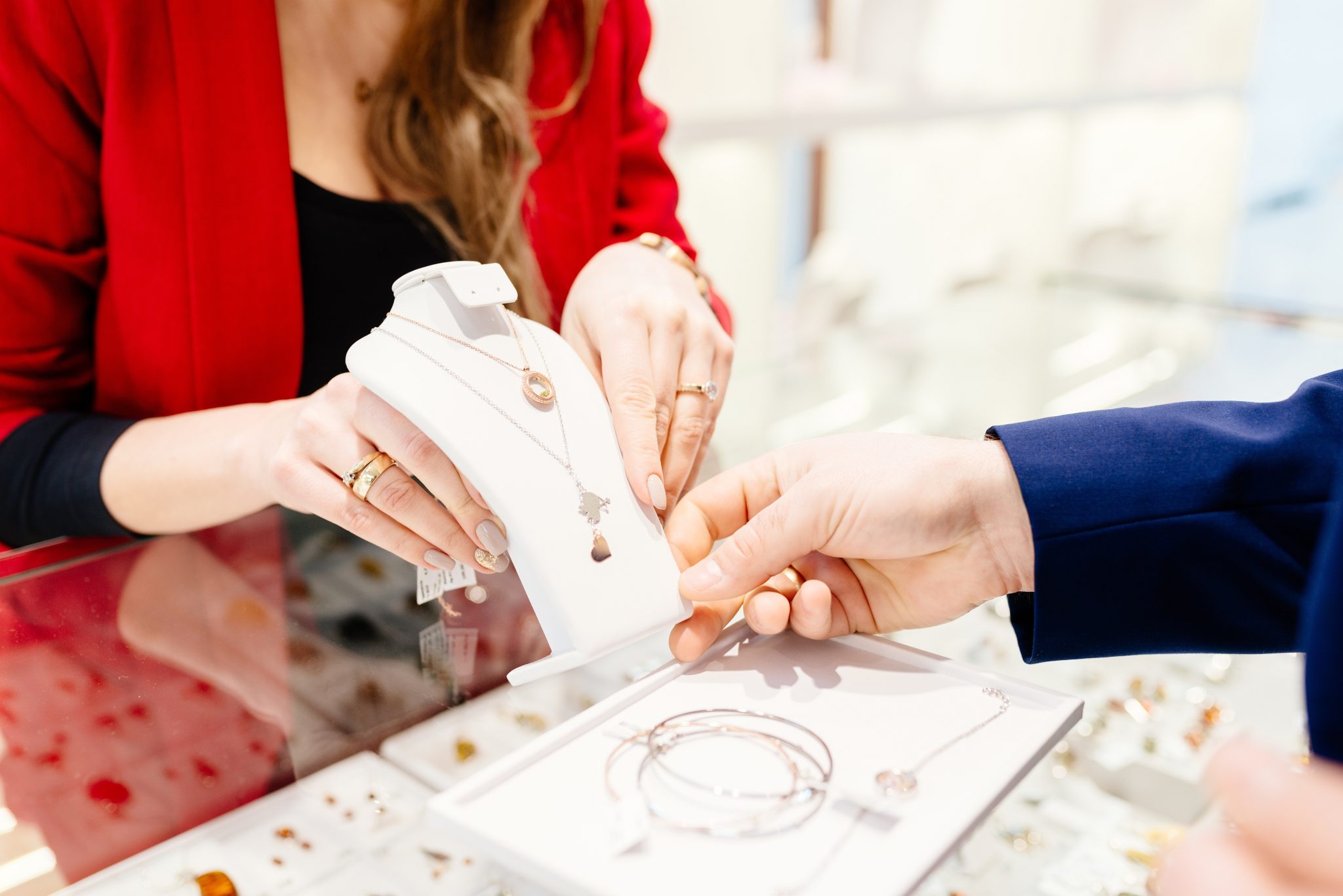
Gioielleria, i numeri del settore: primo semestre in tenuta ma si prevede un calo alla fine del 2023
Le vendite estere trainano il settore italiano dell’oreficeria, argenteria e gioielleria italiano. L’analisi elaborata per Federorafi dal Centro Studi di Confindustria Moda evidenzia, infatti, un andamento positivo anche nel secondo trimestre: +14,2%. L’andamento, dunque, è stato un po’ sinusoidale, fino a raggiungere una sua stabilità: primo spezzone dell’anno con crescita dell’export a due cifre (+16,6%), rallentamento delle vendite tra aprile e maggio (+0,8% rispetto allo stesso bimestre del 2022), nuovo scatto di crescita della domanda estera a giugno, fino alla chiusura del trimestre in forte crescita con il dato confortante del +14,2% rispetto allo stesso trimestre dell’anno precedente.

Nel primo semestre del 2023, il fatturato tende ad aumentare:
quasi tre imprese su cinque (58%) hanno sperimentato una crescita dei ricavi rispetto all’anno precedente e per il 18% del panel l’incremento è stato superiore al +20%. Relativamente ad aprile-giugno la stima del fatturato è pari al +7,2% (nel trimestre iniziale dell’anno era invece del +11,3%).
Dall’indagine di mercato che ha coinvolto un campione di associati intervistati emergono ulteriori dati: nella prima metà dell’anno, nonostante la flessione registrata nel periodo maggio-giugno, c’è stato incremento dell’export (+15,3%), superando i 5,55 miliardi di euro. In aggiunta, l’analisi rileva un consolidamento del saldo commerciale settoriale (+9,1%, cioè 4,1 miliardi di euro) e l’aumento del fatturato (+9,2%). Va sottolineato, però, che la gioielleria da indosso in oro, che è la voce più importante del comparto, ha sì chiuso con un incremento in valore ma ha anche fatto registrare, di contro, una negatività in quantità, cioè -7,6% nei KG.
È previsto però un raffreddamento della crescita nella seconda parte dell’anno
di cui peraltro già si sono avuti chiari segnali nei dati della produzione industriale e delle quantità esportate di gioielleria da indosso in oro.
“I dati semestrali confermano le straordinarie capacità degli imprenditori orafi e l’ottima performance, nonostante il periodo delicato, nel quale molti altri settori del Made in Italy stanno soffrendo – spiega la Presidente di Confindustria Federorafi, Claudia Piaserico – È inevitabile, però, che la seconda parte del 2023 sia caratterizzata da una sensibile attenuazione dei ritmi di sviluppo. Lo scenario è ampiamente prevedibile, in considerazione dell’incertezza attuale nel panorama economico mondiale, con segni di debolezza in molte importanti economie. Teniamo conto anche di un conflitto ancora in corso a più di un anno e mezzo dall’inizio e di un altro appena deflagrato in Medio Oriente”.

L’analisi elaborata per Federorafi dal Centro Studi di Confindustria Moda fornisce due ulteriori dati sui quali riflettere e il secondo dato compensa il primo: le imprese attive rispetto a dicembre hanno subito un lieve calo (-0,9%, cioè 6.977 fino a giugno, -61 unità rispetto al consuntivo 2022) e solo il Piemonte è in controtendenza tra le principali regioni (+8 imprese); i livelli occupazionali conservano una buona tenuta (+1,5% su dicembre scorso, secondo la banca dati di Infocamere). Il numero di addetti è 32.746 tra industria e artigianato con saldo positivo +477 lavoratori.
“La tenuta dei livelli occupazionali conferma la bontà delle strategie messe in atto dalla federazione durante il mio mandato – dice Piaserico – Con il supporto di IEG/Vicenzaoro abbiamo attivato con il portale Skuola.net dove, ad esempio, i due Vblog collaterali VALORE e EREDITA’ in pochi mesi hanno raggiunto sui diversi strumenti social quasi 2 milioni di visualizzazioni. Quindi il settore, con il suo mix unico di creatività, heritage, artigianalità, tecnologia e sostenibilità, riesce a consolidare la propria leadership mondiale e ad essere altamente attrattivo per le nuove generazioni, sebbene resti preoccupante la carenza di giovani e meno giovani che vogliono avvicinarsi alle professioni manifatturiere”.
La Svizzera (+52,5% su gennaio-giugno dello scorso anno) sale al primo posto in valore tra gli sbocchi esteri del settore, superando gli USA (che malgrado un moderato +3,7% restano il mercato in maggior espansione nell’ultimo quadriennio). Al terzo posto la Francia (+9,8%, leader tra i clienti comunitari), davanti agli Emirati Arabi (+0,3%). Crollano invece ulteriormente, come conseguenza del conflitto in atto, le vendite in Russia (-68,1%). In Italia, la Toscana (+13,5%) si è confermata nel primo semestre in testa alla graduatoria delle regioni esportatrici, con una quota pari al 35% del totale nazionale, davanti a Veneto (+1,9%) e Piemonte (-0,6%). Balzo della Lombardia (+71,9%), quarta, grazie anche alle strategie distributive adottate dalle grandi griffe internazionali del lusso. La graduatoria delle province vede sempre al comando Arezzo (+5,6%), seguita da Vicenza (+3,5%), Alessandria (+11,3%), Milano (+74%) e Firenze (+68,2%). Le due province del distretto campano di Napoli-Caserta, importanti dal punto di vista produttivo benché con una bassa propensione all’export, evidenziano nell’insieme un +11,3%.
“Abbiamo scelto azioni misurabili – conclude Piaserico – per l’internazionalizzazione come quelle con la Grande Distribuzione Organizzata in USA, in Francia e in Gran Bretagna, su progettualità innovative per studiare l’evoluzione dei flussi distributivi in Europa e sulla comunicazione con il prossimo avvio (2024) di una campagna istituzionale di influencer marketing per sostenere la domanda in alcuni mercati di riferimento”.
Jewelry, industry numbers: first half of the year holding up but expected to decline at the end of 2023
Confindustria Federorafi president Piaserico: “We will have attenuation of the pace of development due to uncertainty in the world economy and two ongoing conflicts.”
Foreign sales are driving the Italian gold, silver and jewelry sector. The analysis prepared for Federorafi by the Confindustria Moda Study Center shows, in fact, a positive trend in the second quarter as well: +14.2 percent. The trend, then, has been somewhat sinusoidal, until it reached its stability: first chunk of the year with double-digit export growth (+16.6 percent), slowdown of sales between April and May (+0.8 percent compared to the same two-month period of 2022), new burst of growth in foreign demand in June, until the quarter closed with the comforting figure of +14.2 percent compared to the same quarter of the previous year. In the first half of 2023, turnover tends to increase: nearly three out of five companies (58 percent) experienced revenue growth over the previous year, and for 18 percent of the panel the increase was more than +20 percent. Relative to April-June, the turnover estimate was +7.2% (in the initial quarter of the year, it was +11.3%).
Further data emerge from the market survey involving a sample of interviewed members: in the first half of the year, despite the downturn recorded in the May-June period, there was an increase in exports (+15.3%), exceeding 5.55 billion euros. In addition, the analysis notes a consolidation of the sectoral trade balance (+9.1%, or 4.1 billion euros) and the increase in turnover (+9.2%). It should be pointed out, however, that gold wear jewelry, which is the most important item in the sector, yes closed with an increase in value but also recorded, on the other hand, a negativity in quantity, i.e. -7.6% in KG.
However, a cooling of growth is expected in the second half of the year, of which, moreover, there have already been clear signs in the data of industrial production and exported quantities of gold wear jewelry.
“The semi-annual data confirm the extraordinary capabilities of goldsmith entrepreneurs and the excellent performance, despite the delicate period in which many other sectors of Made in Italy are suffering,” explains Confindustria Federorafi President Claudia Piaserico. “It is inevitable, however, that the second part of 2023 will be characterized by a significant attenuation of the pace of development. The scenario is largely predictable given the current uncertainty in the global economic landscape, with signs of weakness in many major economies. We also take into account a conflict that is still ongoing more than a year and a half after it began and another one that has just deflagrated in the Middle East.”
The analysis prepared for Federorafi by the Confindustria Moda Study Center provides two more data on which to reflect, and the second figure compensates for the first: active companies compared to December have decreased slightly (-0.9%, or 6,977 until June, -61 units compared to the 2022 final balance) and only Piedmont is bucking the trend among the main regions (+8 companies); employment levels are holding up well (+1.5% over last December, according to the Infocamere database). The number of employees is 32,746 between industry and crafts with a positive balance of +477 workers. “The resilience of employment levels confirms the goodness of the strategies implemented by the federation during my term in office,” says Piaserico, “With the support of IEG/Vicenzaoro we have activated with the Skuola.net portal where, for example, the two collateral Vblogs VALORE and EREDITA’ in a few months have reached on the different social tools almost 2 million views. So the sector, with its unique mix of creativity, heritage, craftsmanship, technology and sustainability, manages to consolidate its global leadership and be highly attractive to new generations, although the shortage of young and old who want to approach manufacturing professions remains worrying.”
Switzerland (+52.5 percent over January-June last year) rises to first place in value among the sector’s foreign outlets, overtaking the U.S. (which despite a moderate +3.7 percent remains the fastest growing market in the last four years). In third place is France (+9.8%, the leader among EU customers), ahead of the UAE (+0.3%). In contrast, sales in Russia (-68.1%) plummeted further as a result of the ongoing conflict. In Italy, Tuscany (+13.5 percent) was confirmed in the first half of the year at the top of the list of exporting regions, with a share of 35 percent of the national total, ahead of Veneto (+1.9 percent) and Piedmont (-0.6 percent). Leap of Lombardy (+71.9%), fourth, thanks also to the distribution strategies adopted by the big international luxury brands. The ranking of provinces still sees Arezzo (+5.6%) in the lead, followed by Vicenza (+3.5%), Alessandria (+11.3%), Milan (+74%) and Florence (+68.2%). The two provinces in the Naples-Caserta district of Campania, which are important from a production point of view although with a low propensity to export, show an overall +11.3%.
Switzerland (+52.5 percent over January-June last year) rises to first place in value among the sector’s foreign outlets, overtaking the U.S. (which despite a moderate +3.7 percent remains the fastest growing market in the last four years). In third place is France (+9.8%, the leader among EU customers), ahead of the UAE (+0.3%). In contrast, sales in Russia (-68.1%) plummeted further as a result of the ongoing conflict. In Italy, Tuscany (+13.5 percent) was confirmed in the first half of the year at the top of the list of exporting regions, with a share of 35 percent of the national total, ahead of Veneto (+1.9 percent) and Piedmont (-0.6 percent). Leap of Lombardy (+71.9%), fourth, thanks also to the distribution strategies adopted by the big international luxury brands. The ranking of provinces still sees Arezzo (+5.6%) in the lead, followed by Vicenza (+3.5%), Alessandria (+11.3%), Milan (+74%) and Florence (+68.2%). The two provinces in the Naples-Caserta district of Campania, which are important from a production point of view although with a low propensity to export, show an overall +11.3%.


POST COMMENT
Devi essere connesso per inviare un commento.